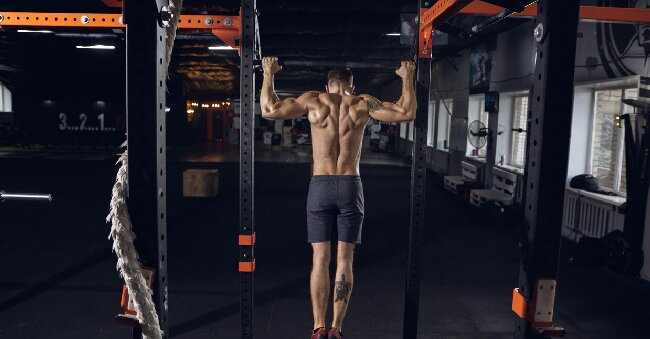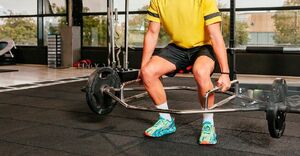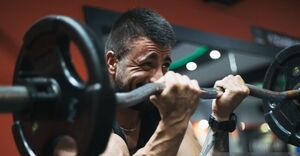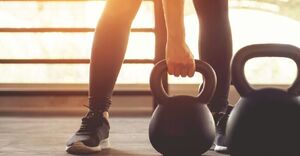
Comprehensive Analysis of Pull-up Training: Choosing and Using Bars and Racks
Are you looking to build upper body strength, improve grip strength, and engage multiple muscle groups? Pull-up training might be just what you need.
In this comprehensive analysis, we will explore the benefits of pull-ups and the equipment needed to get started. From pull-up bars to racks, we’ll discuss how to choose the right equipment for your space and budget. We’ll provide tips on how to properly use pull-up bars and racks, ensuring you get the most out of your training. Whether you’re a beginner or a seasoned fitness enthusiast, this article has something for everyone.
What Are Pull-ups?
Pull-ups are a popular bodyweight exercise that involves lifting the body using the arms by pulling up on a horizontal bar.
Pull-ups are known for their ability to target multiple muscle groups in the upper body, such as the back, shoulders, and arms. This makes them a popular exercise for improving upper body strength.
Including pull-ups in a fitness routine can greatly contribute to achieving fitness goals. They help build endurance, increase overall muscle mass, and promote functional strength.
The versatility of pull-ups allows individuals to modify their grip and hand placement, making it possible to cater to different fitness levels and goals.
Why Are Pull-ups Beneficial?
Pull-ups offer a comprehensive analysis of fitness benefits, including building upper body strength, improving grip strength, engaging multiple muscle groups, and providing versatility in workout locations.
Builds Upper Body Strength
Pull-ups are renowned for their ability to build upper body strength, targeting various muscles including the back, shoulders, and arms.
Engaging in pull-ups not only helps to sculpt and strengthen the back, shoulders, and arms, but also activates the core muscles, promoting overall stability and balance.
The pulling motion involved in pull-ups works to develop the latissimus dorsi, biceps, and forearms, making it an effective compound exercise for enhancing functional strength. The controlled movement required during pull-ups engages the stabilizing muscles, contributing to improved posture and reduced risk of injury during other physical activities.
Improves Grip Strength
Engaging in pull-ups contributes significantly to enhancing grip strength, a crucial element in various fitness activities and exercises.
This improvement in grip strength achieved through pull-ups has a direct impact on overall strength training and fitness. By building hand and forearm strength, individuals can experience enhanced stability in weightlifting, calisthenics, and other physical activities.
Strong grip strength provides a solid foundation for functional movements, such as carrying heavy loads, performing pull exercises, and maintaining proper posture during workouts. The ability to firmly grasp and control equipment and weights is essential for maximizing the effectiveness of a wide range of exercises, making grip enhancement an integral component of comprehensive strength training programs.
Engages Multiple Muscle Groups
Pull-ups engage multiple muscle groups such as the lats, biceps, and core, providing a comprehensive strength-building workout.
Engaging these muscle groups simultaneously not only enhances upper body strength but also improves overall muscle coordination and stability.
The lats play a crucial role in extending the shoulders, while the biceps are responsible for the pulling action. The core muscles are essential for stabilizing the body throughout the movement, contributing to improved posture and overall functional strength.
Incorporating pull-ups into a regular workout routine can lead to significant gains in upper body strength and overall fitness.
Can Be Done Anywhere
One of the key benefits of pull-ups is their versatility, as they can be performed in various locations, making them an accessible exercise for fitness enthusiasts.
Whether it’s at the gym, in a park, or at home using a pull-up bar, this bodyweight exercise offers the flexibility to fit into diverse workout routines.
Its adaptability makes it a popular choice for those looking to build upper body strength and improve overall fitness. Pull-ups provide an effective way to engage multiple muscle groups, offering a challenging yet rewarding workout that can be tailored to individual fitness levels.
With the ability to be incorporated into different settings, this exercise continues to be a staple in bodyweight training regimens.
What Equipment Is Needed For Pull-ups?
To perform pull-ups effectively, specific equipment such as pull-up bars and pull-up racks is essential for creating a conducive workout environment.
Pull-up Bars
Pull-up bars are available in various types, including doorway, ceiling-mounted, and wall-mounted options, offering versatility for installation and exercise diversity.
Doorway pull-up bars are simple to install and provide a convenient option for those renting or unable to modify the space. They typically require no permanent fixtures, making them easy to remove when needed.
Ceiling-mounted bars offer a sturdy and permanent solution, making them ideal for heavy usage. On the other hand, wall-mounted bars are a great space-saving choice and often allow for multiple grip positions, targeting different muscle groups and enhancing the variety of exercises that can be performed on them.
Pull-up Racks
Pull-up racks provide a stable framework for performing pull-ups, and they come in various types, catering to different installation preferences and exercise needs.
Pull-up racks come in various forms, including wall-mounted, freestanding, and attached to a power rack, providing flexibility in space usage.
Aside from pull-ups, these racks also enable a wide range of exercises like leg raises, dips, and hanging ab workouts, making them a vital component for full-body workouts.
Featuring adjustable height settings and different grip options, pull-up racks cater to the needs of both beginners and experienced fitness enthusiasts, serving as a sturdy foundation for developing upper body strength and overall muscle tone.
Doorway Pull-up Bars
Doorway pull-up bars are designed for convenient installation within door frames, ensuring safety and stability during pull-up exercises at home or in gyms.
These bars are a popular choice for upper body workouts, offering adjustable and secure mechanisms that fit standard door sizes. It’s crucial to carefully follow the manufacturer’s instructions when installing the bar and ensure it is firmly attached to the door frame. Prioritizing safety measures, such as checking weight capacity and inspecting the stability of the door frame, can prevent accidents or damage. Additionally, users should be mindful of their grip to avoid slipping or hand injuries during pull-up exercises.
Ceiling or Wall Mounted Pull-up Bars
Ceiling or wall-mounted pull-up bars offer durable and space-saving options for performing pull-ups, ensuring long-term stability and accommodating diverse exercise routines.
Ceiling or wall-mounted pull-up bars are an excellent way to optimize space in a home gym. They can be securely installed to withstand heavy usage, ensuring safety during workouts.
The sturdy construction and bolted installation make these bars a versatile and essential piece of equipment for strength training. They enable a wide range of exercises, including chin-ups, leg raises, and ab workouts, making them perfect for any fitness enthusiast’s home gym. With their durability and flexibility, ceiling or wall-mounted pull-up bars are a valuable addition to any workout routine.
How To Choose The Right Pull-up Bar?
When selecting a pull-up bar, factors such as available space, budget considerations, weight limitations, and additional features play a crucial role in making the right choice.
Consider Your Space and Budget
Before purchasing a pull-up bar, it’s important to assess available space and budget constraints. This ensures compatibility with your home gym setup and fitness investment plans.
When evaluating the dimensions of the designated area for the pull-up bar, consider both the height and width for adequate clearance and comfortable usage.
It’s also crucial to factor in the structural integrity of the mounting surface to ensure safety during workouts.
When it comes to budget considerations, prioritize quality and durability to maximize the value of your investment. Look for options that offer a balance between affordability and sturdiness, ensuring that the chosen pull-up bar aligns with your long-term fitness goals and overall home gym arrangement.
Check for Weight Limitations
It’s essential to verify the weight capacity of a pull-up bar to ensure safety and durability, accommodating the user’s weight and variations in exercise routines.
This not only guarantees the user’s safety during workouts but also contributes to the longevity of the equipment.
Exceeding the weight limit can compromise the structural integrity of the pull-up bar, leading to potential accidents and damage.
Regularly checking and adhering to the weight limitations recommended by the manufacturer enhances the overall reliability of the equipment, ensuring a secure and effective workout experience.
Understanding the weight capacity also helps in selecting the appropriate pull-up bar for specific body types and fitness levels, preventing unnecessary wear and tear.
Look for Comfort and Grip Options
Consider pull-up bars with comfortable grip options to minimize hand fatigue and enhance exercise performance, ensuring a more enjoyable and effective workout experience.
By prioritizing comfortable grip options, users can maintain a firm hold during pull-ups, leading to a more secure and stable feel. This not only reduces the risk of slippage but also allows for a greater focus on the targeted muscle groups, thereby maximizing the effectiveness of each repetition.
With minimized hand fatigue, individuals can prolong their workout sessions, leading to improved endurance and overall strength development. Ultimately, the inclusion of ergonomic grip features significantly impacts the user’s ability to perform pull-ups with proper form and efficiency.
Consider Additional Features
Explore pull-up bars with additional features such as adjustable heights, versatile grips, or attachment options, enhancing their functionality and exercise diversity.
These added features not only make installation and adjustment convenient, but also provide opportunities for a wide range of exercises, targeting different muscle groups and allowing for varied workout intensities.
With adjustable heights, users can easily customize the bar to their preferred level, while versatile grips and attachment options enable more dynamic and challenging movements, fostering overall strength and flexibility. This versatility in features encourages users to explore various exercise variations, making the pull-up bar a comprehensive tool for full-body workouts.
How To Properly Use Pull-up Bars and Racks?
Adopting proper warm-up routines, maintaining correct form and technique, gradually increasing difficulty, and incorporating exercise variations are essential elements for effectively using pull-up bars and racks.
Warm Up Beforehand
Prioritize warm-up activities such as stretching and mobility exercises to prepare the muscles and joints for pull-up bar and rack workouts, reducing the risk of injuries and enhancing performance.
Warm-up routines are essential for preparing the body for pull-up bar and rack exercises. They increase blood flow, improve flexibility, and enhance joint mobility. Incorporating dynamic stretching and mobility exercises can engage the muscles used during the workout, promoting better muscle activation and preventing strains.
These warm-ups also prepare the body for the intensity of the workout, improving overall quality and reducing the risk of overuse injuries. By breaking paragraphs into concise sentences, readability and SEO are optimized for a better user experience and search engine indexing.
Use Proper Form and Technique
Maintaining proper body position, grip alignment, and controlled movements is crucial for executing pull-ups effectively and safely on bars and racks.
This attention to form and technique is essential for ensuring that the right muscle groups are engaged and that unnecessary strain is avoided. Correct body alignment not only prevents injury but also optimizes the effectiveness of the exercise.
Likewise, a stable and secure grip provides a solid foundation for the movement, leading to a more controlled and powerful execution. Emphasizing these aspects of form and movement precision can make a significant difference in the overall benefit and outcome of pull-up exercises.
Gradually Increase Difficulty
Progressively challenge yourself by increasing the difficulty of pull-up exercises, incorporating variations, and gradually expanding the range of bodyweight movements on bars and racks.
As you advance, you can enhance your pull-up routine by incorporating different grips, such as wide grip, narrow grip, or mixed grip.
Integrate bodyweight challenges like leg raises, L-sit pull-ups, or one-arm pull-ups to intensify the workout. You can explore uneven pull-ups, where one hand is positioned higher than the other, and explosive pull-ups to work on explosive strength.
These variations not only provide a physical challenge but also keep the workouts engaging and effective.
Incorporate Variations and Rest Days
Integrate diverse pull-up variations into your workout routine, and allow for adequate rest days to optimize recovery and enhance overall performance on bars and racks.
This approach ensures that your muscles are consistently challenged from various angles, targeting different muscle groups and preventing plateau. By incorporating exercises like wide-grip, close-grip, and weighted pull-ups, you can effectively build strength and improve muscle balance.
Having rest days in your routine allows your muscles to repair and grow, reducing the risk of overtraining and injury. Not only does it contribute to overall workout diversity, but it also plays a crucial role in effective recovery, ensuring sustained progress in your pull-up routine.




No Comments